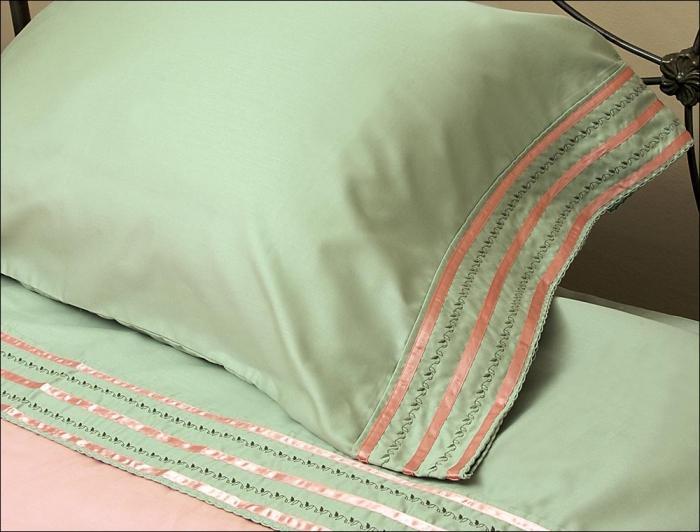How much time do we spend in a dream? Someone more, someone less, but on average it is 8-9 hours a day, it turns out that almost a third of life. And how many get enough sleep during this time? Does sleep bring rest to many? Or maybe an unpleasant touch or pungent smell of your own bedding makes all the hairs on your body stand on end? Have you often thought about this? And it would be worth it! After all, this is still a third of life!
How to choose bedding in the market? Or do you master the sewing of bed linen with your own hands? The second option will be much cheaper, but about it a little later.
Let's talk about the choice of bed linen, and what you need to pay attention to. In the selection, we are often guided only by external characteristics, although it is worth digging further. There is no need to be afraid of oblique glances, and turn the pillowcase and duvet cover inside out and carefully examine the seams, a linen seam should be used here, without open cuts and ugly zigzags, otherwise the bedding will start to crawl along the seams after washing. You should also sniff for linen, it should not have a sharp and unpleasant smell. If the search for a quality bedding at an affordable price for you was unsuccessful, it's time to set yourself up for the idea of “learning to sew”.
Let's go back to independent sewing and try to figure out how to sew bedding correctly.
First you need to determine the size and quantity of the desired fabric. If the duvet cover and sheet have their own standard sizes, then it is better to measure your favorite pillow.
The usual one and a half linen set consists of pillowcases 70 by 70, sheets and a duvet cover 150 by 210 cm. The double set is slightly larger, its sheet is 220 by 260 and the duvet cover is 200 by 220 cm. There are also family sets, they have a large sheet, two one and a half duvet cover and pillowcase. However, it is better to measure your blanket and mattress so that the "clothes" for your bed sit down perfectly.
When calculating the fabric, it is worth considering the allowances for seams and the density of the material. The denser the fabric, the greater the distance the linen seam takes. As for the fabric, it can be cotton, satin, calico, linen, silk or chintz. It is advisable to take a cloth 220 cm wide to cut the linen across the cut. At the seams of the duvet cover and pillowcase, where the edge of the fabric falls, the linen seam can not be used, just lay a regular stitch with an average step. Only sheets are processed on sheets, they need to be doubled and stitched.

A linen seam, also called a seam, which is used in the processing of bed linen, is done like this. The parts are folded with their faces inward, the cut of the lower blade should slightly protrude from the top, a line is laid at a distance of 3 mm from the edge of the upper cut. After grinding, the parts are laid out and straightened along the seam. Next, the protruding edge is doubled in the direction of a smaller cut and tuned. Thus, a seam comes out, hiding all the sections, and due to two laid lines, it becomes stronger.
As you can see, everything is quite simple, the main thing is to choose a good quality fabric and enjoy bedding of your own production.